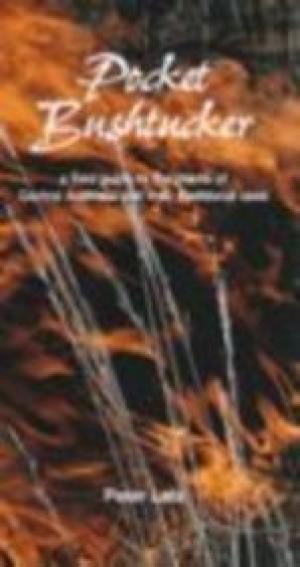Northern Wild Orange, Wire Bush, Curly Windmill Grass – how brave are you to try this tucker? The traditional resources of the desert people are still available and very much in use today. Expert Aboriginal knowledge is the basis for this compact guide, which features listings for more than 180 Central Australian plants species, traditional uses of each, and plant names in local Aboriginal languages.Focusing on the most common and commonly-used Central Australian edible plants, this 4×7<> pocket-sized guide covers plants’ botanical name, English common name, and names in a half dozen Aboriginal languages, as well as a description, the plant’s habitat, and uses. Includes some colour photographs. iv, 215, [8] p. of plates : ill. ; 18 cm. #0119 SCARCE ( prev ownership initials [?] on fep)
Aboriginal Australians — Australia, Central — Food. | Aboriginal Australians — Australia, Central — Medicine. | Aboriginal Australians — Australia, Central — Ethnobotany. | Wild foods — Australia, Central. | Wild plants, Edible — Australia, Central. | Medicinal plants — Australia, Central. | Pintupi language (C10) (NT SF52-11) | Anmatyerre / Anmatyerr language (C8.1) (NT SF53-09) | Language – Vocabulary – Plant names. | Kaytetye / Kaytej language (C13) (NT SF53-06) | Pitjantjatjara language (C6) (NT SG52-11) | Warlpiri language (C15) (NT SF52-04) | Indigenous knowledge – Health and medicine. | Alyawarr / Alyawarre language (C14) (NT SF53-07) | Food – Bush tucker. | Material culture. | Arrernte / Aranda language (C8) (NT SG53-02) | Plants. | Northern Territory – Central NT.
“
